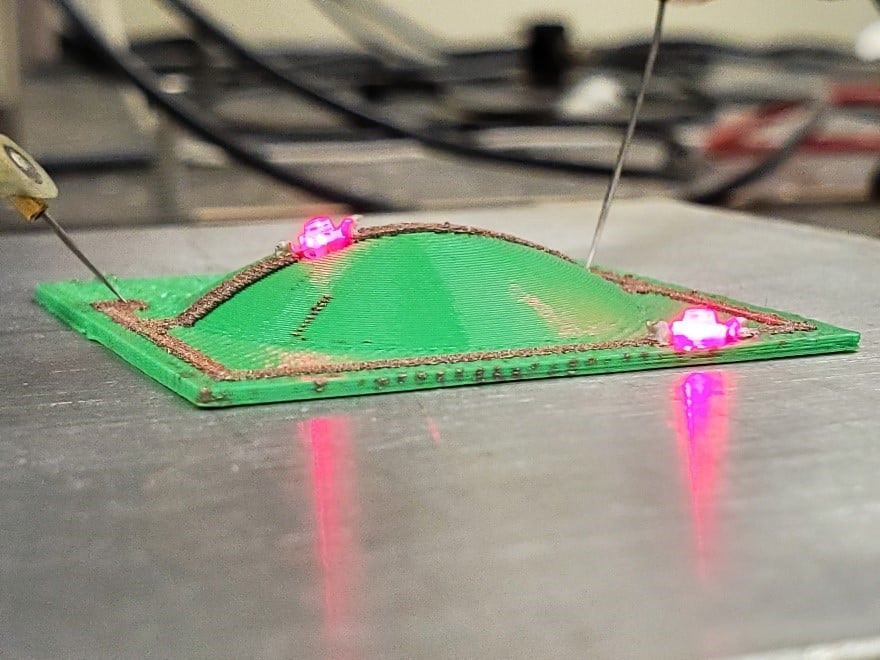While repairing an old Ham radio transmitter back in high school, I found a bad capacitor. It was a large metal-can electrolytic type, bolted to the steel chassis of the radio. Because it was part of the negative 250 Vdc bias supply, the can was isolated from the chassis with an insulating fiber washer. Unfortunately, the replacement capacitor didn’t come with such a washer, and I couldn’t use the old one because it didn’t fit. Not to be deterred, I decided to make my own custom insulator using a piece of rubber cut from an old bicycle inner tube. To this day, I still remember the small explosion that resulted when I flipped on the power switch, not to mention the odor that was released – I dubbed it “Essence of Midnight in Pittsburgh”. I learned the hard way that inner tubes are not just rubber, but contain a substantial amount of carbon black and therefore don’t make very good insulators.
Circuit design for conductive inks- Part 1: Intro
May 24, 2021 8:38:33 AM / by Chris Lott posted in printed electronics, printed flexible electronics, Conductive Inks, circuit design
If you can grill, you can become a photonic soldering master!
Nov 24, 2020 1:54:31 PM / by Rudy Ghosh posted in Photonic Soldering, printed electronics, flexible electronics, printed flexible electronics, PulseForge
Late fall in Austin is beautiful. Temperatures are in the mid-70s and it’s relatively dry – making it a great time to be outdoors. Combine the weather with Texans love for barbecuing and grilling, and eating outside with friends becomes a daily activity.
PulseForge processing of 3D printed devices with conductive filaments
Oct 23, 2020 10:37:03 AM / by Harry Chou posted in Photonic Curing, printed electronics, printed flexible electronics, 3D printing, Conductive filaments, Electrical performance 3D printed
As a team, we love to highlight and share the work we see being done by researchers using NovaCentrix equipment and materials. While we regularly do this internally, my hope in sharing and writing about this recently published work for a broader audience is that it helps spread some interest in new tech, as well as bring attention to these great results. Researchers at the Army Research Laboratory and Duke University have shown that PulseForge curing can dramatically improve the electrical performance of 3D printed conductive filament composite materials.
3D printing, or additive manufacturing, has seen commercial efforts over several decades with a quick rise in interest over the past several years. A Gartner analysis from 2019 showed a 300% growth in enterprise 3D printer manufacturers over the preceding 3 years. Aerospace and medical device industries were among the first to create real value by using additive manufactur
ing to reduce weight and consolidate the assembly of components. Their success has paved the way for many other industries to evaluate new 3D printing techniques for their own processes.



